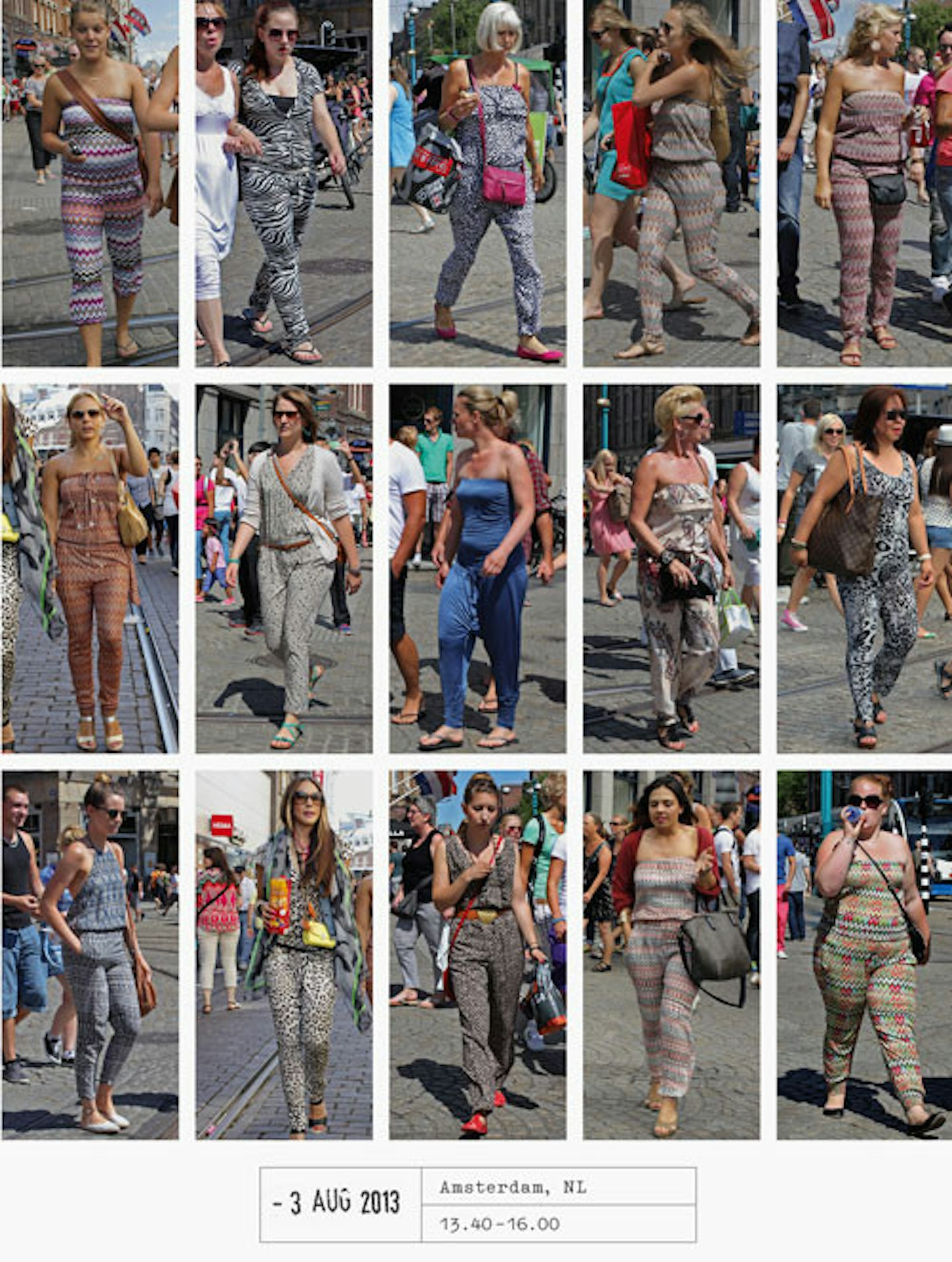How many times have you walked around town and felt like there must have been some secret memo sent around saying that all the guys should have beards and APC jumpers, and that women have joined a vintage Levis and Breton top cult?
If you’ve been to London’s Broadway Market on a Saturday morning, you would definitely be forgiven for thinking you had stepped into a clone-themed episode of The Twilight Zone – and that said episode was sponsored by Ray Ban.

Proving that people can’t help but all dress the same is Dutch photographer Hans Eijkelboom, who for more than 20 years has been observing and snapping common threads in the style he sees on the streets, the results of which are collected in his new book People of the Twenty-First Century, published by Phaidon next month.
Focusing on a small area in cities across the world, including New York, London, Paris, Shanghai, Mumbai and Amsterdam, Eijkelboom photographed everyone he saw who looked the same over a two-hour time slot. The results? A startling repetition of specific items of clothing – some of which gulp we think you might recognise.
‘It was kind of like a diary where it was important to me to find the immediate culture of the street,’ Eijkelboom tells The Debrief.
With the images spanning from 1993 to 2013, fleeting trends are abundant. Remember that five minutes in 2007 when we all thought footless tights and a cut-off denim skirt seemed like the most boundary-pushingly-cool outfit you’d ever heard of? Even if you’ve blocked it out, Eijekelboom’s got the pictures to prove just how ubiquitous it became.
